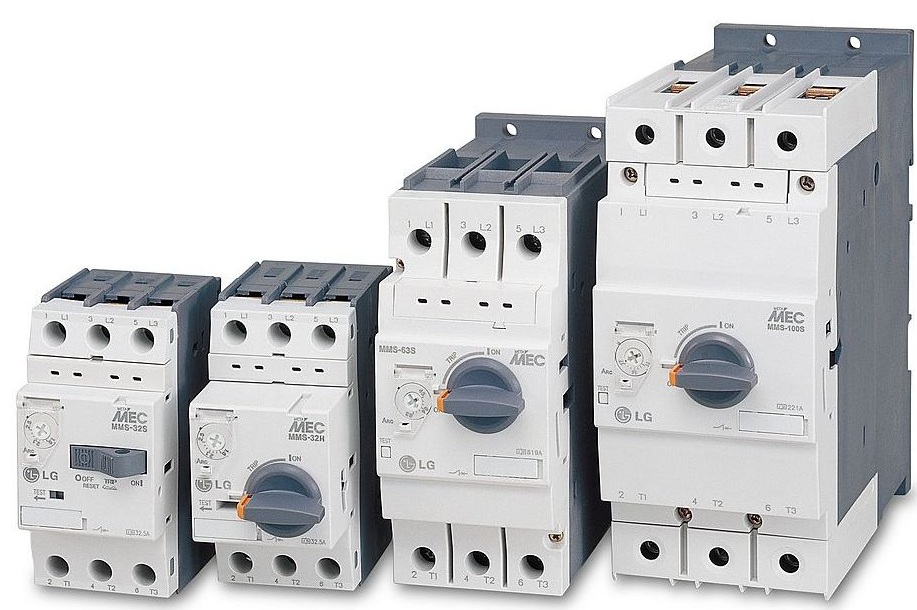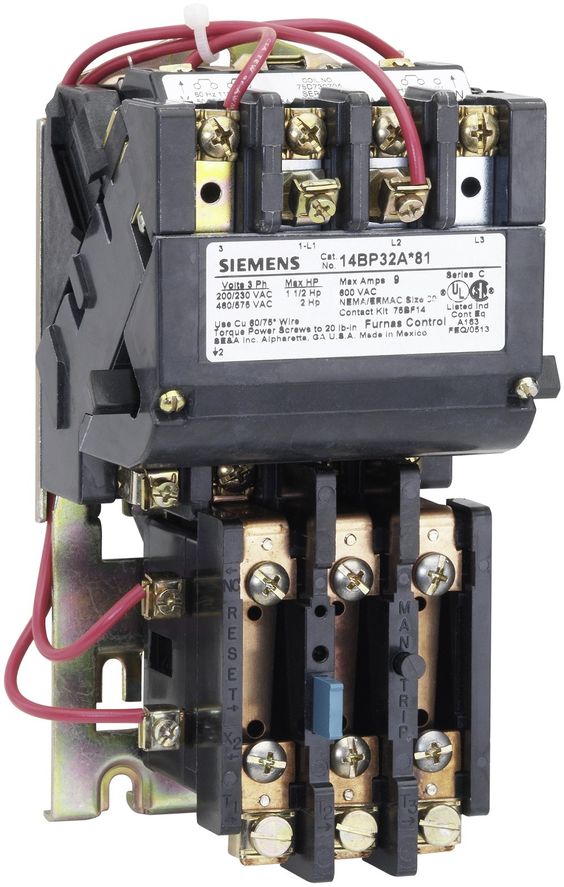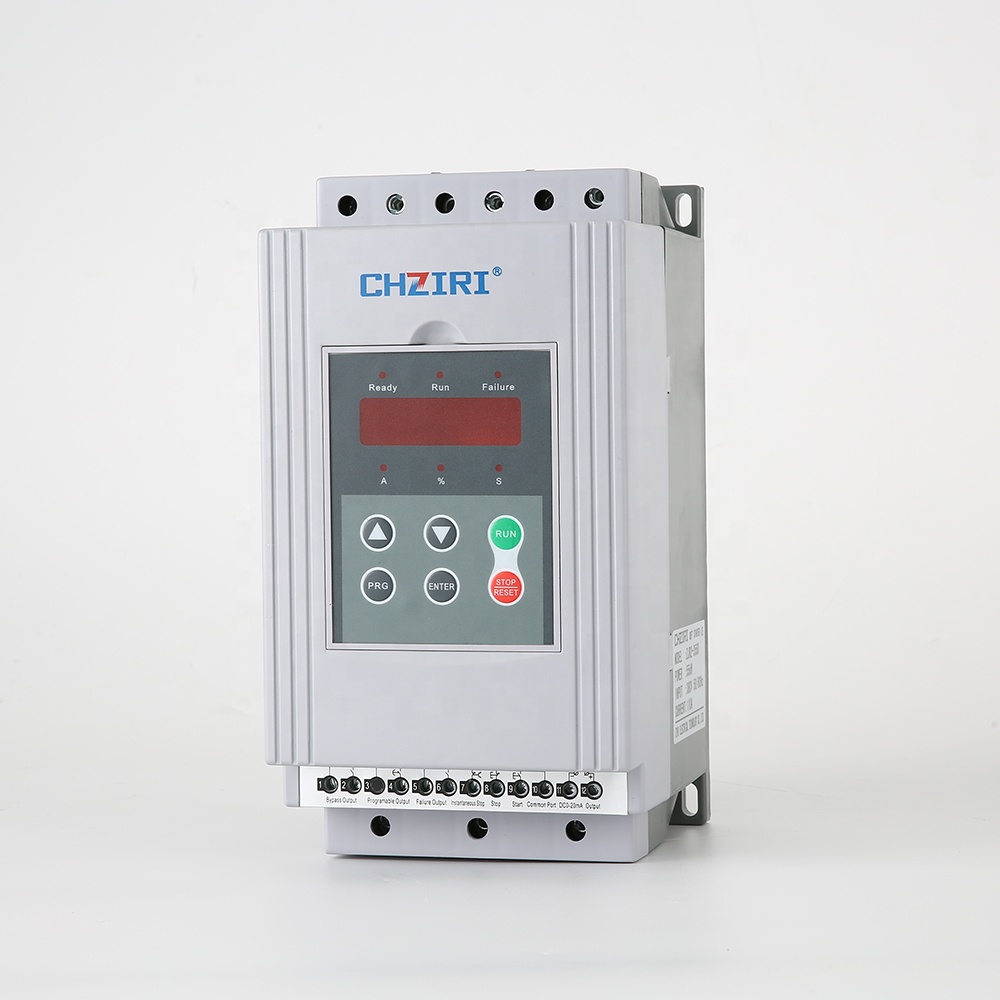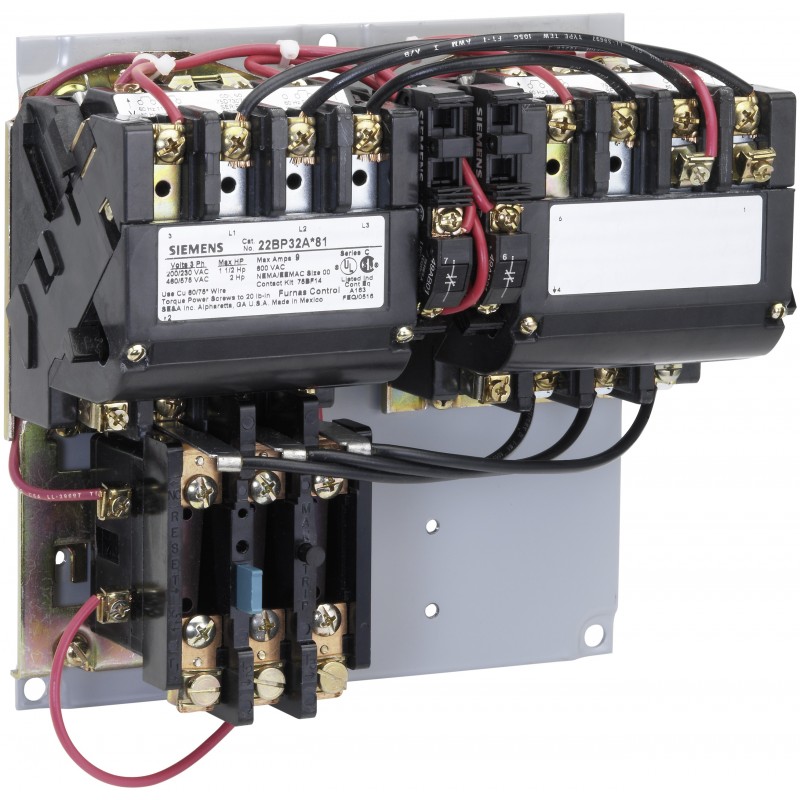The primary purpose of a starter motor is to stop and start the motor to which it is combined. These are specially produced electromechanical switches the same as the relays. The main distinction between a relay and a starter is that a starter carries overload protection for the motor.
So the function of the starter is double, i.e. to change the power automatically or manually in a motor and protect the motor from overload or faults simultaneously.
The starter motor is an electric motor that starts the engine by turning it over or “cranking” it. It comprises a strong DC (Direct Current) electric motor and a motor-attached starting solenoid. The use of Industrial Tools results in the creation of a starter motor. Starter Motors are provided by several Suppliers And Companies, different manufacturers, and a lot of distributors and there are a lot of Starter Motors For Sale on Linquip.
There is a detailed list of starter motor services on the Linquip website that meets all of your needs. Linquip can connect you with a number of industrial starter motor service suppliers and experts who can help you. Linquip provides a list of Starter Motor Experts who can help you with equipment testing.
Starter motors are available in different capacities and sizes based on the motor (AC motor) rating and dimension. These starters safely switch the motor’s required power and prevent the motor from drawing large currents.
What is Starter Motor?
A starter motor is an electrical device that is utilized to start & stop a motor reliably. Same as a relay, the motor starter switches the power OFF/ON, and unlike a relay, it also presents low voltage and overcurrent protection.
- The primary functions of a motor starter are:
- To safely stop a motor.
- To safely start a motor.
- To reverse the motor’s direction.
- To protect the device from low voltage and overcurrent.
Where Is the Starter Motor?
A flywheel and a pinion gear connect the starting motor to the crankshaft’s end. When the ignition is turned on, an electromagnet within the starting motor activates, pushing a rod out with the pinion gear. The engine is turned over while the flywheel revolves. A starting motor lasts 100,000-150,000 kilometers on average. The starting motor in many automobiles lasts the whole life of the vehicle; nevertheless, in some cars, it might fail early.
How does a Motor Starter operate?
A starter is a switching device that has electrical contacts (both for incoming and outgoing). Based on the operation, starters are fundamentally divided into electrically operated and hand-operated devices.
A hand-operated starter consists of a lever on its side that can be turned on or off. Usually, these are employed in smaller motors as they are ineffective in remote operations.
This type of starter motor makes the motors restart immediately after a power break. This immediate operation after power shortage may lead to the flow of serious currents into the motor, and the motor will be consequently damaged . That is the reason why most of the starter motors have electrical switches.
In the case of electrically based starters, electromechanical relays are employed for switching the power transmitting conductors. These relays are named contactors. As the coil in the contactor is excited, it provides the electromagnetic field, pulling the switch contacts.
And while the coil is de-energized, the spring arrangement pulls back contacts to a normal position. Usually, the motor starters are equipped with push buttons (start and stop buttons) to de-energize and energize the coil, and contacts will be operated. Electrically operated starters do not restart after a failure until the button is pushed.

Starting Techniques
In industries, various starting methods are employed to start an induction motor. Some of the techniques starters are discussed here.
Full Voltage or Across The Line Starter
These starters directly join the motor with the power line producing the full voltage. The motor connected by such starters has low power ratings, so it does not create a considerable voltage drop in the power line. They are employed in applications where motors have low ratings and need to run just in one direction.
Full Voltage Reversing Starter
The direction of a 3 phase induction motor can be reversed by swapping any of the two phases. Such a starter includes two mechanically interlocked magnetic contactors beside swapped phases for forward and reverse direction. It is employed in applications where the motor requires it to run in both directions, and the contactors are used to control it.
Multi Speed Starter
To vary the speed in an AC motor, we need to change the AC supply frequency or alter the number of poles (by reconnecting the windings) of the motor. Such kinds of starter run the motor at a few pre-selected rates to meet its requests.
Reduced Voltage Starter
The most typical starting procedure is to decrease the voltage at the starting of the motor to diminish the inrush current that could damage the motor’s windings and cause a considerable dip in voltage. These starters are common in high-rated motors.
Type of Starter Motors
Based on the methods described above, the following sorts of motor starters are employed in industries. Here, we will discuss the different types of motors and their starting with advantages and disadvantages. Different types of starter motors are as the below:
- Rotor Resistance or Slip Ring Motor Starter
- Direct Online Starter (DOL)
- Stator Resistance starter
- Soft Starter
- Variable frequency drive (VFD)
- Autotransformer Starter
- Star Delta Starter
The starter motors have many types, but they are mainly classified into two types: manual and magnetic.

Manual Starter
This type of starter works manually and does not need any experience. A push-button is used to turn ON and OFF the motor connected to it. The mechanism following the pushing button includes a mechanical switch that cuts or makes the circuit stop or start the motor.
They also give overload protection. However, these starters do not include low voltage protection, and they do not break the circuit at power failure. It may be dangerous in some applications as the motor restarts while the power is restored. Direct On-Line (DOL) starter is a type of manual starter that has overload protection.
Magnetic Starter
Magnetic starter motors are the most typical type of starter, and they are mostly employed in high power AC motors. These starters function electromagnetically like a relay that makes or breaks the contacts using magnetism.
It presents a lower and safer voltage for starting and also includes protection facing low voltage and overcurrent. During the power breakdown, the magnetic starter automatically cuts the circuit. It has an automatic and remote operation that eliminates the operator, unlike manual starters.
The magnetic starters consist of two circuits:
Power circuit_ Power circuit is responsible for providing power to the motor. It has electrical contacts that switch ON/OFF the power supplied from the line to the motor through an overload relay.
Control circuit_ this circuit regulates the contacts of the power circuit to both break or make the power supply to the motor. The electromagnetic coil de-energized or energized to change the electrical contacts. Therefore, this type provides remote control.

Direct Online (DOL) Starter
Direct Online Starter, aka DOL, is the simplest motor starter that directly connects the motor to the power supply. It has a magnetic contactor that combines the motor to a supply line and an overload relay for protection toward overcurrent. There is not a voltage reduction for reliable starting a motor. So, the motor working with such starters has a rating below five hp. It has two manageable push buttons that start and stop the motor.
Pressing the start button excites the coil that pulls the contactors to close the circuit. And pushing the stop button de-energizes the contactor’s coil and makes its contacts apart, so cutting the circuit. The switch can be of any type, such as level, rotary, float, etc.
Although this starter does not produce safe starting voltage, the overload relay protects against overheating and overcurrent. The overload relay has typically closed contacts that energize the coil.
The Advantages of DOL
Advantages of the DOL are:
- It has a straightforward and cost-effective design.
- It is very easy to understand and manage.
- It gives high starting torque because of the high starting current.
Disadvantages of DOL
Disadvantages of the DOL are:
- The huge inrush current may damage the windings.
- The high inrush current makes voltage dip in the power line.
- It is not a good choice for heavy motors.
- It can reduce the lifespan of a motor.

Stator Resistance starter
Stator resistance starter employs the reduced voltage starter technique to start motors. External resistance is attached in series with all phases of a 3 phase induction motor’s stator. The resistor’s function is to lessen the line voltage (subsequently decreasing the initial current) connected to the stator.
In the beginning, the variable resistor is held at the highest position giving maximum resistance. The voltage in the motor is minimum (at the safe level) because of the voltage drop over the resistor. The low stator voltage narrows the starting inrush current that may damage the windings. As the speed increases, the resistance is decreased, and the stator phase is connected to the power lines directly.
The current is proportional to the voltage, and torque changes with the square of the current; so, a two times decrease in the voltage reduces the torque four times. Therefore the starting torque using this starter is very low and requires maintenance.
Advantages of stator resistance starter motor
Advantages of stator resistance starters are:
- It offers flexibility in starting characteristics.
- The variable voltage supply provides smooth acceleration
- It can be combined with both delta or star connected motors.
Disadvantages of stator resistance starter motor
Disadvantages of stator resistance starters are:
- The starting torque is very weak because of voltage reduction
- The resistors dissipate the power
- For large motors, the resistors are very expensive.
Slip Ring or Rotor Resistance Starter Motor
This kind of motor starter operates on a full voltage motor technique. It operates only on a slip ring induction motor, so it is known as a slip ring starter motor.
External resistances are joined to the rotor with star combination through the slip ring. These resistors restrict the rotor current and boost the torque, reducing the starting stator current. Additionally, it helps in intensifying the power factor.
The resistors are only employed during the start of the motor. It is removed as the motor picks up its considered speed.
Advantages of Rotor Resistance Starter Motor
Advantages of rotor resistance starters are:
- It presents a low starting current using full voltage.
- Because of high starting torque, the motor can start to work under load.
- This method increases the power factor.
- It allows a wide range of speed control.
Disadvantages of Rotor Resistance Starter Motor
Disadvantages of rotor resistance starters are:
- It exclusively works with a slip ring induction motor.
- The rotor is heavy and expensive.
Autotransformer Starter
Such motor starters use an autotransformer as a step-down transformer to decrease the voltage connected to the stator during the starting step. It can be combined with both star and delta connected motors.
The autotransformer’s secondary is joined to each phase of the motor. The multiple tapings of the autotransformer produce a fraction of the fixed voltage. When starting, the relay is at the first position, i.e. the tap point presenting a reduced voltage for the startup. The relay changes between the tap points to raise the voltage with the speed of the motor. Finally, it joins it with the full rated voltage.
Compared to other voltage reduction methods, it gives high voltage for a particular starting current. It provides better starting torque.
Advantages of Autotransformer Starter
Advantages of autotransformer starters are:
- It offers a better starting torque.
- It is used for starting large motors with a meaningful load.
- It also provides flexibility in starting characteristics.
- It also provides manual speed control.
Disadvantages of Autotransformer Starter
Disadvantages of autotransformer starters are:
- because of the large size of the autotransformer, it takes too much space.
- The circuit is complicated and comparatively expensive than other starters.

Star Delta Starter
This type is another standard starting method for large motors used in industries. The 3 phase induction motor’s windings are switched between delta and star connection to start the motor.
It is connected in a star connection by applying a triple pole double throw relay to start the induction motor. In star connection, the phase voltage is reduced by 1/√3. It decreases the starting torque and the starting current by 1/3 of the average rated value.
As the motor accelerates, a timer relay changes the star connection of the stator windings into the delta connection, providing the total voltage across all windings, and the motor operates at rated speed.
Advantages of Star Delta Starter
Advantages of star delta starters are:
- Its design is cheap and simple.
- It does not need maintenance.
- Present a low surge current.
- It is the best choice for a long acceleration time.
- It is used for starting large induction motors.
Disadvantages of Star Delta Starter
Disadvantages of star delta starters are:
- It operates on a delta connected motor.
- There are more extra wire connections.
- It gives low starting torque.
- There is minimal flexibility in starting characteristics.
- There is a mechanical jerk at switching from star to delta.
Soft Starter
The soft starter works with the voltage reduction technique. It employs the semiconductor switches same as TRIAC to manage the voltage and the starting current provided to the induction motor.
A phase-controlled TRIAC is used to produce variable voltage. The voltage is modified by changing the firing angle or the conduction angle of the TRIAC. The conduction angle is held at a minimum to produce reduced voltage. The voltage is raised slowly by increasing the conduction angle. The full line voltage is applied to the induction motor at the maximum conduction angle, so it runs at a determined speed.
It offers a gradual and smooth increment in the starting current, voltage and torque. Thus, there is no mechanical jerk and helps a smooth operation that increases the machine’s life span.
It provides a gradual and smooth increase in the starting voltage, current as well as torque. As there is not any mechanical jerk and it provides a smooth operation, it increases the lifespan of the machine.

Advantages of Soft Starter
Advantages of soft starters are:
- It presents better control over starting current and voltage.
- It allows smooth acceleration because of no jerks.
- It decreases the power surges in the system.
- It increases the lifespan of the system.
- Give better efficiency and do not need maintenance.
- It is small compared to the other types.
Disadvantages of Soft Starter
Disadvantages of soft starters are:
- We have energy dissipation in the form of heat.
- It is relatively costly.
Variable Frequency Drive (VFD)
Same as the soft starter, a Variable frequency drive (VFD) can change the voltage rate and the frequency of the supplying current. It is principally used to control the induction motor rate as it depends on the frequency.
By using rectifiers, The AC from the supply is transformed into DC. The DC is converted into AC with flexible frequency & voltage, applying pulse width modulation technique by power transistor, the same as IGBTs.
It gives complete control over the motor speed. The option of speed adjustment with the shifting voltage presents a better starting current and acceleration.
Advantages of Variable Frequency Drive
Advantages of variable frequency drive are:
- It offers smooth and better acceleration for large motor
- It provides full speed control with smooth deceleration and acceleration.
- It extends the life span because of the absence of mechanical and electrical stress.
- It allows forward and reverse action of a motor.
Disadvantages of Variable Frequency Drive
Disadvantages of variable frequency drive are:
- It is comparatively expensive, except speed control is required.
- It has heat dissipation
- VFDs produce harmonics in the lines, which may affect electronic devices.
Dowload Starter Motor PDF
Read More In Linquip
- Universal Motor: a Simple Guide to Construction, Types and Working
- The Simple Guide to Motor Efficiency: What It is and What to Do
- A Complete Guide to Repulsion Motor
- What is a Hysteresis Motor: Ultimate Guide
- 10 Types of CNC Machine + Applications & PDF
- 13 Parts of CNC Machine + Function & PDF: A Clear Guide
- What Is CNC Machining & How Does It Work? (A Comprehensive Guide)
- Working Principle Of DC Motor: 2022 Complete Guide
- Working Principle of Stepper Motor: 2022 Ultimate Guide
- Working Principle of AC Motor: 2022 Ultimate Guide
- Working Principle of Induction Motor: 2022 Full Guide
- DC Motor Efficiency: Calculation: Formula & Equation
- Efficiency of Induction Motor: Calculation & Equation
- What is Gear Shaft? Clear Principle & Advantages
- What is Motor Shaft?
- What is a Reduction Gearbox?
- What is a Series Wound DC Motor?
- What is Axial Flux Motor and It’s Working Principle?




Thank you for sharing this very reliable and informative article. I appreciate this a lot. Actually, I love it. It is worth reading and sharing.
Thank you for sharing your positive experience with Linquip. Your review made our day! Every member of our team works very hard to make sure our visitors are happy, but we could not do it without you. Thank you again, and we look forward to serving you again soon.
Your kind words are much appreciated! It was a pleasure having you visit us.
thank you so much for sharing these valuable information , love u brother.
Thanks for visiting our website and leaving your comment, Anuj! We hope to hear from you again in our other posts.